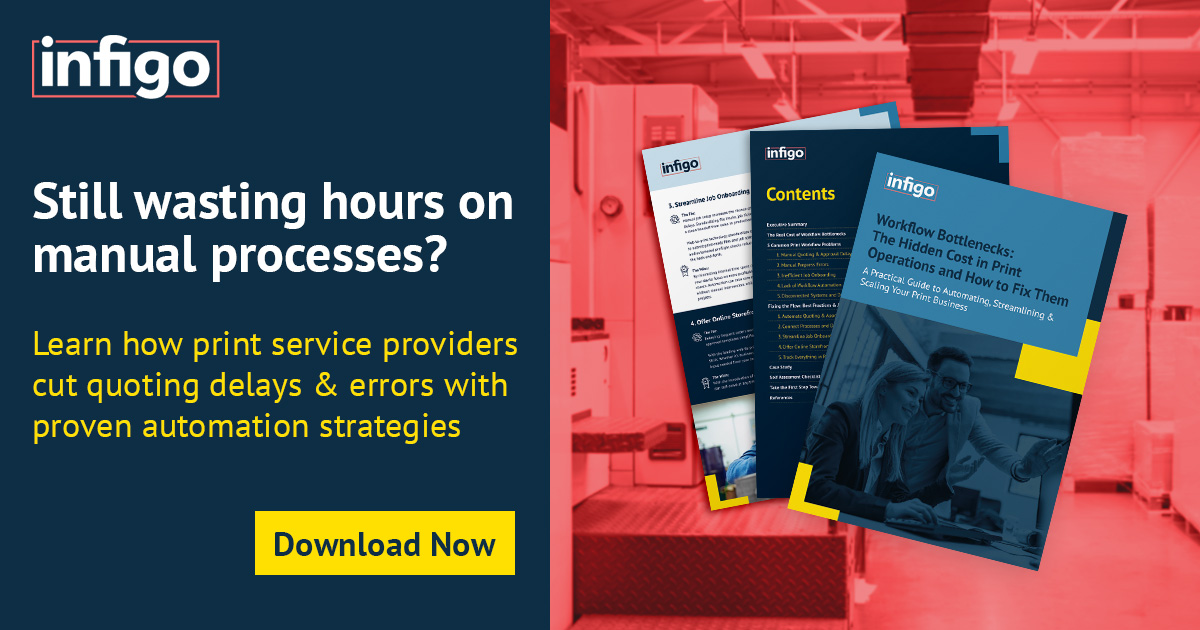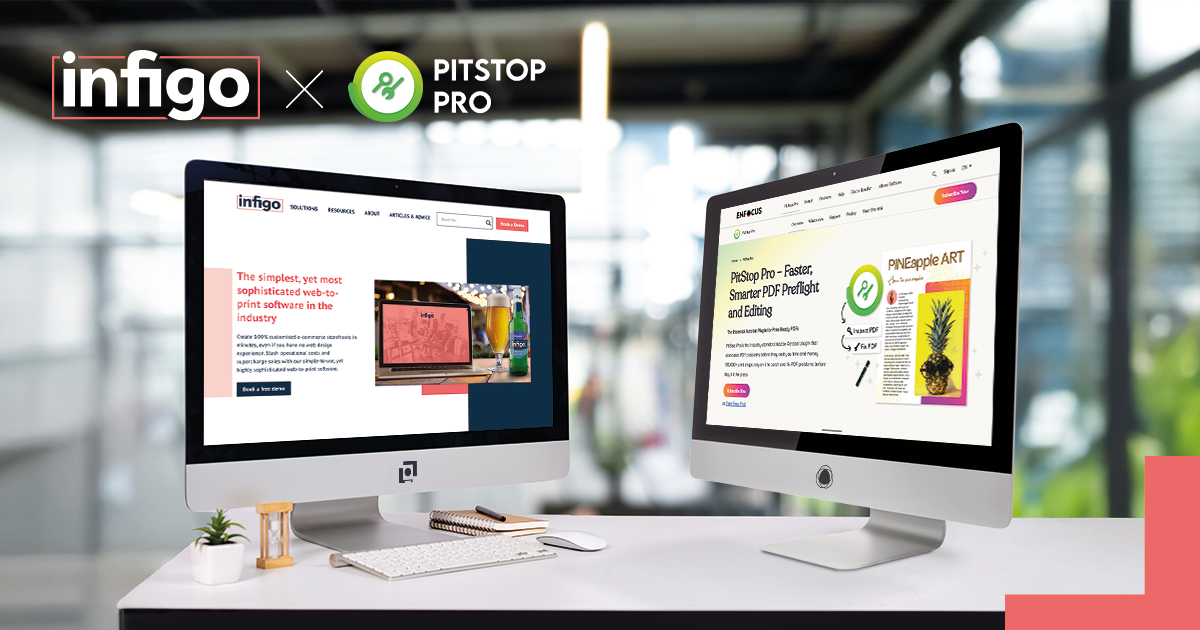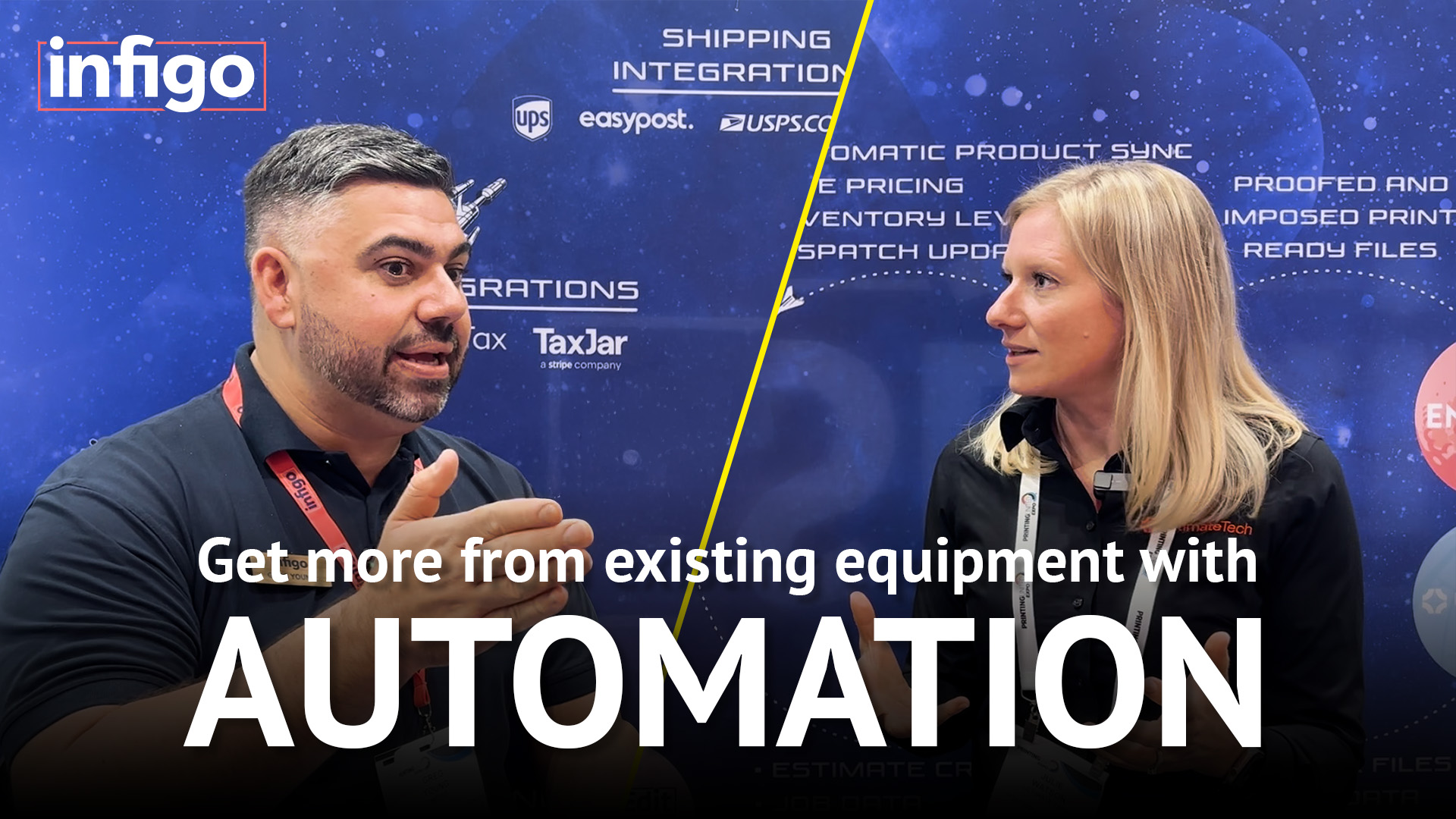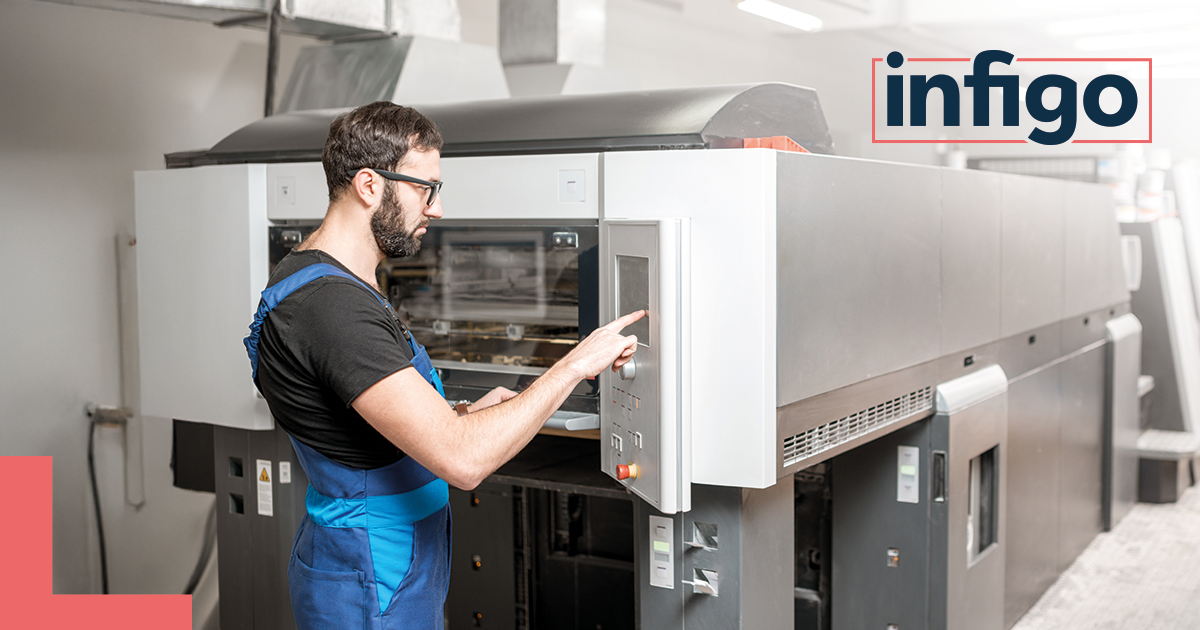In 2025, print operators face a pivotal challenge: invest in commercial print automation solutions or face an erosion of profits. Rising labor costs, tighter margins, and customer demands for speed, personalization, and reliability mean that manual, fragmented workflows are no longer viable.
For commercial printers, in plants, and B2B print service providers, future profitability lies in intelligent print automation software, MIS (Management Information System) integration, and holistic print workflow optimization.
In this article we discuss how automation is reshaping print, supported by real life success stories and measurable outcomes.
The Automation Imperative in Print
The acknowledgement that automation is no longer optional is now near universal in the print sector. According to industry data, 80% of print professionals say AI and automation are essential to improving workflow, reducing cost, and supporting future innovation.
However, there is a major disconnect. According to the same study, only 55% of respondents are currently investing in the automation technologies that would enable them to thrive.
This is despite mounting evidence across numerous industries that automation is already delivering significant gains. For example, Formstack cites that the average company saves about $46,000 annually through workflow automation by reducing:
- repetitive tasks
- errors
- administrative bottlenecks.
Formstack also claims that 32% of companies saw fewer human errors after automating workflows.
Meanwhile, in the broader automation field, McKinsey’s analysis of robotic process automation (RPA) suggests organizations can achieve up to a 200% return on investment in the first year.
These figures point to a clear truth: automation isn’t just about cost cutting. It’s about safeguarding competitiveness.
Firms that lag in adopting integrated, intelligent workflows risk growing operational debt, slower throughput, lower margins, and unhappy clients. Clients that could soon be looking for a new print provider.
The Evolution Beyond Basic Digitization
Many print organizations have already made the leap from analog to digital. But digital is only the baseline. The next frontier is intelligent automation; systems that don’t just execute tasks, but anticipate, adapt, and optimize.
AI is being embedded into software to optimize resource usage, prevent bottlenecks, and adjust prioritization dynamically. Print OEMs and software providers are increasingly exploring AI for scheduling, predictive maintenance, and automated file correction.
And a range of web-to-print ROI case studies emphasize the hidden value of integration. In short, an automated integrated workflow is proven to improve the ordering experience, and reduce costs.
Print workflow automation helps reduce errors, lower waste, and add efficiency. And the more integrated your workflow, the more benefits you will see.
For example, purely by adding a web-to-print front end can reduce production costs by 20–50% depending on the workflow and job mix.
The evolution is clear: print businesses must transition from standalone systems and manual data transfers between platforms into unified, intelligent ecosystems. It’s the only way you can have the agility to react to surges, reassign capacity, and maintain quality at scale.
MIS Integration: Building the Operational Foundation
An advanced MIS isn’t just a “job ticketing system” it is the operational hub and synchronizes data across estimating, orders, production, inventory, accounting, and customer communications.
With bidirectional integration between MIS, web storefronts, prepress tools, and production workflows, every department operates from the same live dataset. Which obviously has a range of benefits for your team and business:
- reduced manual data entry,
- fewer repro jobs,
- faster decision making,
- improved visibility.
Cloud-based MIS systems, that drive automated printing worklfows, also bring remote access, scalability, and continuous updates. For print operations, this means that your scheduling team, estimators, customer service representatives, and production staff can all view the same real-time status, even when working remotely or in hybrid environments.
A complete game-changer and another reason why print automation software is essential in 2025.
Especially for print providers who prioritize real-time visibility, agile decision-making, and lower error rates across the board.
The Business Case for B2B Print Portals Automation
While an MIS enables you to efficiently manage orders across the workflow, a B2B print portal helps automate the job submission and ordering process. A well-integrated B2B portal shifts your relationship with customers from manual order cycles to a self-service, recurring model.
According to one study on self-service B2B portals, conducted by the Cologne International School, the top benefits cited by users were:
- Cost and time savings through optimized and automated processes (46%)
- Improved customer experience (40%)
- Optimized data analysis (39%)
- Increase in customer loyalty (36%)
- Better marketing (32%)
- Fewer error sources in processes (29%)
- Increased employee efficiency (28%)
- Centralized information (28%)
- Better data management (28%)
- Support international expansion (23%)
Beyond hard cost savings, portals give you predictability in demand, repeat ordering, and “stickier” client relationships, especially in B2B settings where brand consistency and order templates are valuable to clients.
Portal adoption also tends to reduce customer service overhead and manual order churn, helping you preserve margin even as order volumes grow.
Workflow Integration Success: The Infigo Advantage
But not every web-to-print platform has the ability to integrate into an MIS or complex workflow. Infigo’s strength is that we deliver robust API-based connectivity to MIS systems, middleware, and production tools, enabling truly automated, end-to-end workflows.
And we have many examples of clients that have transformed their workflow, and direction of their business, by integrating the Infigo platform into a new, or existing, tech stack:
- Peczuh Printing used Infigo to connect with Tharstern MIS, Switch Frome middleware, and Fuji XMF in a unified pipeline. The result: jobs flow from the storefront to press with automated file validation and status updates between systems.
- Talient Action Group (TAG) used Infigo to automate virtually every touchpoint in the print lifecycle. From quotation, to proofing, job routing, press scheduling and even invoicing, TAG was able to reduce operational complexity while improving speed of delivery.
- FE Burman migrated from lengthy storefront setups to having new storefront configurations ready in days instead of months.
- AMS Print built a 24/7 automated print environment, enabling job intake, production, and fulfillment around the clock without proportional staff increases.
A typical outcome for our users:
- Up to 40% faster job completion times
- 50–80 % reduction in file handling errors
- Dramatic reductions in manual intervention on proofs, file correction, and job handoffs
To put it simply – when all your systems (storefront, MIS, prepress, imposition, production) speak the same language, you eliminate handoffs, manual checks, and delays.
That’s the compelling advantage of MIS workflow integration powered by a platform like Infigo.
Measuring Success: ROI and Performance Metrics
We have spoken about the benefits of web-to-print, but obviously you also need to assess whether it’s a worthwhile investment.
And the ROI depends on a range of factors, which is why it’s difficult to give concrete figures on the sort of return you can expect.
That’s precisely why internal metrics—before & after data from your systems—are so critical. When you integrate MIS, storefront, and prepress, your KPIs should include:
- Job turnaround time
- Reprint rate / error rate
- Manual touches per job
- Staff hours per job
- Profit margin per job
- Client retention / repeat orders
To help calculate ROI effectively:
1. Assess the Total Costs
Begin by identifying all expenses involved in implementing your workflow automation solution. This includes:
- The upfront cost of the software
- Any required hardware upgrades
- Employee training
- Ongoing subscription fees or maintenance costs
Capturing these numbers accurately gives you a clear baseline for comparison.
2. Measure the Financial Gains
Once you’ve outlined the costs, the next step is to estimate the monetary value of the benefits automation delivers. For example, if automating a process saves your team 100 hours per month, and your average hourly wage is $30, that translates to $3,000 in monthly labour savings.
Be sure to also factor in other gains such as:
- Reduced error rates
- Faster job turnaround
- Increased production capacity
- Improved customer retention
3. Use the ROI Formula
With both costs and benefits defined, apply the standard ROI equation:
ROI = (Total Benefits − Total Costs) / Total Costs
Let’s say your automation initiative costs $50,000 and delivers benefits (like time saved and efficiency gains) worth $80,000 over a given period. The calculation would be:
ROI = ($80,000 − $50,000) / $50,000 = 0.6 or 60%
This indicates a 60% return on your initial investment.
4. Determine Your Break-Even Point
The break-even point is when the cumulative savings equal the initial investment. If the system costs $50,000 to implement and yields $10,000 per month in savings, then:
Break-even period = $50,000 / $10,000 = 5 months
After this point, the automation solution starts delivering net profit.
5. Monitor Long-Term Value
ROI isn’t a one-time snapshot. As your automation platform continues to streamline workflows, eliminate inefficiencies, and reduce manual workloads, the benefits accumulate.
Regularly tracking performance helps ensure the system continues to deliver value and can uncover opportunities for further optimization..







